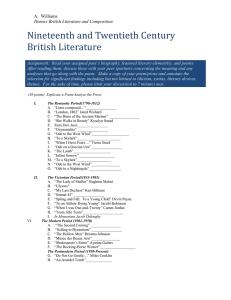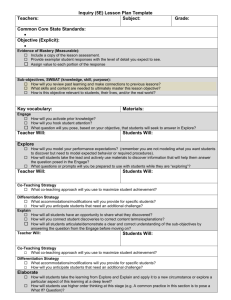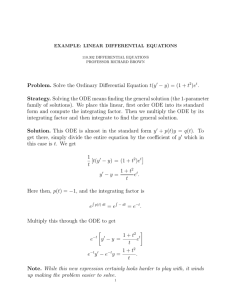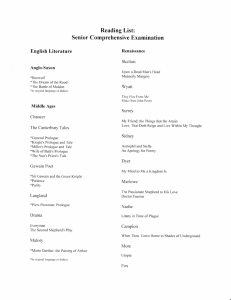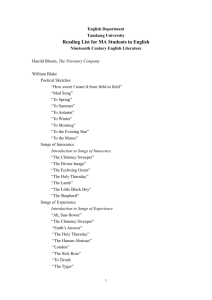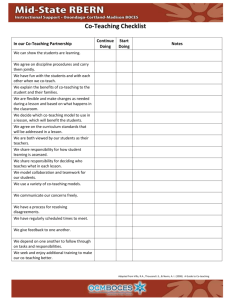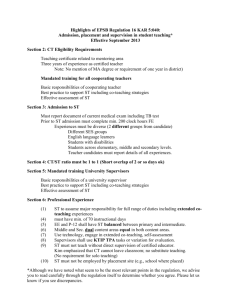Statement of Purpose-EDTL7100
advertisement
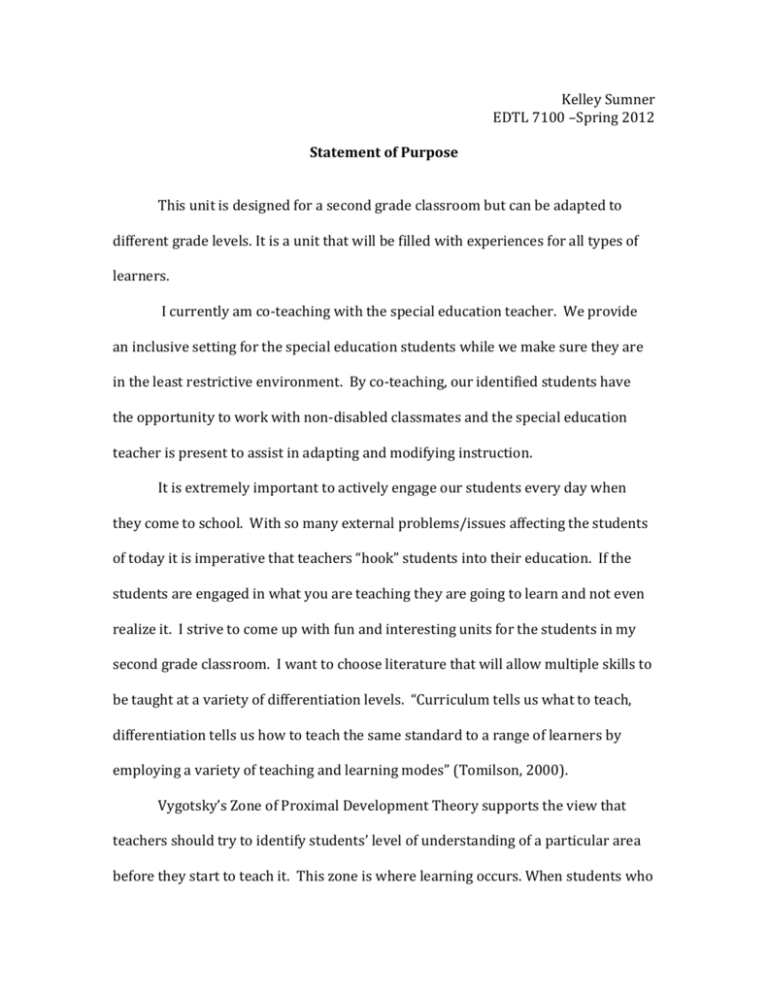
Kelley Sumner EDTL 7100 –Spring 2012 Statement of Purpose This unit is designed for a second grade classroom but can be adapted to different grade levels. It is a unit that will be filled with experiences for all types of learners. I currently am co-teaching with the special education teacher. We provide an inclusive setting for the special education students while we make sure they are in the least restrictive environment. By co-teaching, our identified students have the opportunity to work with non-disabled classmates and the special education teacher is present to assist in adapting and modifying instruction. It is extremely important to actively engage our students every day when they come to school. With so many external problems/issues affecting the students of today it is imperative that teachers “hook” students into their education. If the students are engaged in what you are teaching they are going to learn and not even realize it. I strive to come up with fun and interesting units for the students in my second grade classroom. I want to choose literature that will allow multiple skills to be taught at a variety of differentiation levels. “Curriculum tells us what to teach, differentiation tells us how to teach the same standard to a range of learners by employing a variety of teaching and learning modes” (Tomilson, 2000). Vygotsky’s Zone of Proximal Development Theory supports the view that teachers should try to identify students’ level of understanding of a particular area before they start to teach it. This zone is where learning occurs. When students who have similar zones work together, their learning is optimized. “Differentiating instruction through approaches such as small-group learning, individual projects and student choice helps students achieve academic excellence.” (Cuban, 2012). This unit is an excellent mix of these approaches. The common core standards were developed to have a clear, shared national expectation and understanding of what students are to learn. My teaching also has to be relevant to the students so that they can make real world connections to what they are learning. Teachers should not just check off standards as they accomplish them rather create standards based lessons where the standards are not just an isolated skill. “Effective learning will occur as an integrated process. The integration of reading, writing and speaking in a Language Arts classroom is important” (ODE). Bibliography Pritchard, Alan. (2009) Ways of Learning: Learning Theories and Learning Styles in the Classroom (2nd edition). London & New York, Routledge. Cuban, Larry. 2012, February) “Standards vs. Customization: Finding the Balance” Educational Leadership 69(5), 10-15. Tomlinson, C.A. (2000). “Reconcilable differences: Standards-based teaching and differentiation”. Educational Leadership, 58(1), 6-11. Tuzzeo, Jennifer. (2012, February) “Making Standards Serve the Students”. Educational Leadership, 69(5). Retrieved from: http://www.ascd.org/publications/educationalleadership/feb12/vol69/num05/Making-Standards-Serve-the-Student.aspx Ohio Department of Education Retrieved from: http://www.ode.state.oh.us/GD/Templates/Pages/ODE/ODEDefaultPage.aspx?pag e=1

